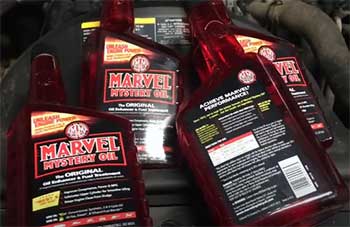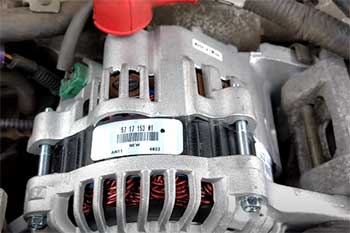I’ve always been a bit of a gearhead when it comes to my car, so when it was time to pick a dashcam, I wanted something reliable, sharp, and worth the cash. That’s when I found myself stuck between the VIOFO A129 and the A229—two solid contenders from a brand known for quality.
My goal with this article is to break down my experience with both, weighing their pros and cons, and figuring out which one suits me (and maybe you) best.
Whether you’re after crisp video, easy setup, or parking mode peace of mind, I’ll walk you through it all, real-user style.
A Brief Comparison Table
| Feature | VIOFO A129 | VIOFO A229 |
| Front Resolution | 1080p (Duo), 4K (Pro Duo) | 1440p (2K) |
| Rear Resolution | 1080p | 1440p (2K) |
| Wi-Fi | 2.4GHz | Dual-band (2.4GHz + 5GHz) |
| Screen Size | 2.0 inches | 2.4 inches |
| Cable Type | Thick USB | Slim Coaxial |
| Parking Modes | Auto Event, Time Lapse, Low Bitrate | Same + Buffered Option |
| GPS | Yes (with mount) | Yes (with mount) |
| Voice Notifications | No | Yes |
| Price (Approx.) | $120-$170 (varies by model) | $170-$200 |
My Journey With Dashcams: Why VIOFO?
Let me set the scene: I’m driving through a busy city intersection, and some guy in a pickup cuts me off, nearly clipping my bumper. No witnesses, no proof—just my word against his.
That’s when I realized I needed a dashcam. I’d heard VIOFO thrown around in car forums as a go-to for budget-friendly yet feature-packed options, so I decided to give them a shot. The A129 has been around for years, a trusty classic, while the A229 is the newer kid on the block, promising upgrades.
I wanted to see if the hype held up—and if the A229’s extras were worth the upgrade.
Unboxing The VIOFO A129: First Impressions
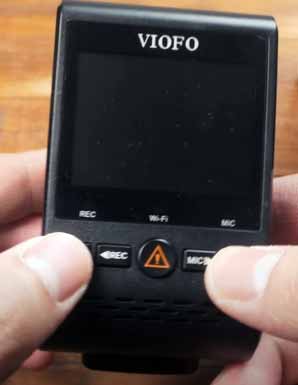
When I got my hands on the A129, it felt like a solid little brick—compact, wedge-shaped, and ready to hide behind my rearview mirror.
The 2-inch screen was small but functional, showing me a live feed and letting me tweak settings with a few button presses.
It came in a few flavors: the basic A129 Duo with 1080p front and rear, and the beefier A129 Pro Duo boasting 4K up front.
I went with the Duo because, honestly, 4K seemed overkill for my needs, and the price jump wasn’t tempting.
The kit included a GPS mount, a chunky USB cable for the rear camera, and a power adapter. Setup was straightforward—stick it to the windshield, plug it in, and route that thick cable to the back. It wasn’t the prettiest install, but it got the job done.
Right away, I liked how discreet it was. No one’s spotting this thing unless they’re looking for it.
Unboxing The VIOFO A229: A Step Up?
Fast forward to the A229, and I could tell VIOFO had listened to users like me. The box felt more polished, and the dashcam itself? Still that familiar wedge shape, but with a bigger 2.4-inch screen that made a difference.
The rear camera swapped the A129’s blocky design for a sleek, cylindrical look—way easier on the eyes. And that coaxial cable? At 2.8mm thick, it’s a dream to tuck away compared to the A129’s bulky USB cord.
The A229 promised 2K (1440p) for both front and rear, dual-band Wi-Fi, and voice notifications—stuff the A129 didn’t have. I was excited to see if these upgrades would make my daily drives feel safer and smoother.
Video Quality: Seeing The Road Clearly
- VIOFO A129: Solid but Showing Its Age
The A129’s 1080p footage was decent. Daytime drives looked clear—license plates were readable up close, and colors popped nicely thanks to the Sony STARVIS sensor.
At night, it held up okay, but details got muddy past a car length or two. The 130-degree front angle and 140-degree rear gave me a good chunk of the road, but I noticed some edge distortion.
If you snag the A129 Pro Duo, that 4K front camera is a game-changer—crisp enough to catch plates from farther away.
But the rear stays at 1080p, so it’s a mixed bag. For me, the standard Duo was fine for basic protection, but I started wishing for more sharpness as I reviewed clips.
- VIOFO A229: A Noticeable Leap
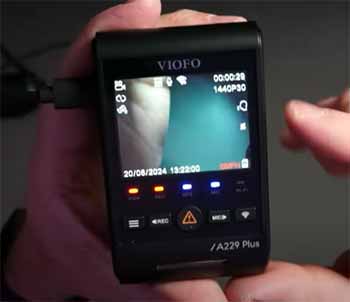
The A229’s 2K resolution blew me away. Both cameras use a 5MP Sony STARVIS sensor, and the difference was obvious.
Daytime footage was tack-sharp—plates were legible even a few cars ahead.
At night, the wider F1.6 aperture and better tech kept things clearer than the A129, though it’s not perfect in pitch-black conditions.
The 140-degree front and 160-degree rear angles widened my view, catching more of those sneaky side swipes.
Side by side, the A229’s footage felt like an upgrade—like going from a flip phone camera to a modern smartphone. It’s not 4K, but for most of us, 2K strikes a sweet spot between quality and storage.
Installation: Pain or Pleasure?
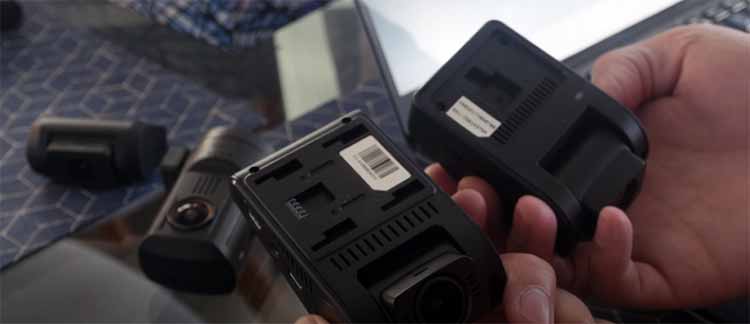
- VIOFO A129: A Bit of a Wrestle
Installing the A129 wasn’t hard, but it wasn’t a breeze either. The adhesive mounts stuck firm, and the GPS module snapped on easily. Routing that thick USB cable to the rear, though? A nightmare in my sedan.
I spent an hour wrestling it under trim panels, cursing every time it popped out. It worked, but it looked messy unless you’re a pro at hiding wires.
Powering it up was simple with the cigarette lighter adapter, though I later hardwired it with the HK3 kit for parking mode. It’s functional, just not elegant.
- VIOFO A229: Smooth Sailing
The A229 made me smile during setup. That slim coaxial cable slipped under my headliner like it was made for it—no fuss, no bulk. The reversible USB-C power cable was a nice touch, letting me plug in from the side or the GPS mount.
It took half the time of the A129, and the result was cleaner—almost invisible unless you’re hunting for it.
The cylindrical rear camera also rotated 360 degrees, so I could tweak its angle perfectly. It’s little things like this that made me feel VIOFO had my back.
Connectivity: Wi-Fi and Apps
- VIOFO A129: Basic but Reliable
The A129’s 2.4GHz Wi-Fi worked fine for pulling clips to my phone via the VIOFO app. It wasn’t lightning-fast—downloading a minute of footage took maybe 20 seconds—but it got the job done.
The app itself is barebones: live view, playback, and settings. No frills, no crashes. It’s practical, though I wished for quicker transfers when I needed evidence fast.
- VIOFO A229: Speed and Smarts
The A229’s dual-band Wi-Fi (2.4GHz and 5GHz) was a revelation. That 5GHz option cut download times to about 5 seconds for the same clip—huge when you’re in a hurry.
The app felt snappier too, and the voice notifications (“Recording started!”) were a cool bonus. No more guessing if it’s working. It’s a small upgrade that made a big difference in my day-to-day use.
Parking Mode: Protecting My Ride
- VIOFO A129: Covers the Basics
Both dashcams need a hardwire kit for parking mode, and the A129 delivered three options: Auto Event Detection (motion or impact triggers recording), Time Lapse (low-frame-rate continuous), and Low Bitrate (lower quality continuous).
It worked well—caught a shopping cart bump once—but there’s no buffering, so you miss the seconds before an event. Solid, but not cutting-edge.
- VIOFO A229: Extra Peace of Mind
The A229 keeps the same three modes but adds buffered recording to Auto Event Detection. That means 15 seconds before and 30 seconds after an event are saved—crucial if someone dings your door and bolts.
I tested it with a fake “bump” (sorry, trash can), and it captured everything. It’s a step up that could save you in a hit-and-run.
Pros And Cons of VIOFO A129 And A229 Dashcams
VIOFO A129 Pros
- Affordable entry point—great if you’re on a budget.
- Reliable 1080p footage (or 4K with Pro Duo) for basic needs.
- Compact and discreet—blends into your windshield.
- Proven track record—years of user trust behind it.
- GPS logging for speed and location proof.
VIOFO A129 Cons
- Thick USB cable is a pain to hide.
- 1080p rear feels dated next to newer models.
- No voice notifications—less user-friendly.
- Slower 2.4GHz Wi-Fi can drag.
- No buffered parking mode—misses key moments.
VIOFO A229 Pros
- 2K front and rear—sharp, detailed footage.
- Slim coaxial cable makes install a breeze.
- Dual-band Wi-Fi—faster downloads, better app experience.
- Voice notifications keep you in the loop.
- Buffered parking mode—catches the full story.
VIOFO A229 Cons
- Pricier than the A129—might stretch your wallet.
- Still no touchscreen—buttons can feel old-school.
- No 4K option if you’re chasing max resolution.
- Larger screen adds slight bulk—not as stealthy.
My Take On These Dashcams?
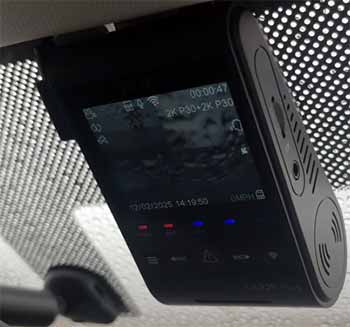
Driving with the A129 felt safe but basic.
It recorded a fender bender last year—clear enough to show the other guy ran a red light.
But the rear footage was grainy, and pulling clips was slow.
Switching to the A229, I noticed the difference fast.
A near-miss with a tailgater showed up in crisp 2K, plates and all, and the Wi-Fi had it on my phone before I finished parking.
The buffered parking mode also caught a kid on a bike brushing my car—proof I wouldn’t have had with the A129.
The A229 feels like VIOFO took the A129 and said, “Let’s make it better for real people.” It’s not perfect—no dashcam is—but it’s closer to what I want on the road.
- What’s Worth It?
The A129 Duo runs about $120-$150, while the Pro Duo hits $170-ish. The A229 lands around $170-$200. For me, the A129 is a steal if you just need the essentials—1080p and GPS on a budget.
But the A229’s $50-ish premium gets you 2K clarity, faster Wi-Fi, and that slick install. If you’ve got the cash and value sharper video or easier setup, the A229’s worth it. If you’re pinching pennies, the A129 still holds its own.
Analytical Angle: Data Tells The Story
Let’s break this down with numbers—I’m a sucker for the hard facts. Here’s how the A129 and A229 stack up across key metrics.
- Video Specs Table
| Metric | A129 Duo (Front/Rear) | A129 Pro Duo (Front) | A229 (Front/Rear) |
| Resolution | 1920×1080 / 1920×1080 | 3840×2160 / 1920×1080 | 2560×1440 / 2560×1440 |
| Sensor | IMX291 / IMX291 | IMX317 / IMX291 | IMX335 / IMX335 |
| Bitrate (Mbps) | 15 / 15 | 25 / 15 | 20 / 20 |
| File Size (10 min, GB) | 1.8 / 1.8 | 3.0 / 1.8 | 2.4 / 2.4 |
| FPS | 30 / 30 | 30 / 30 | 30 / 30 |
| Field of View (°) | 130 / 140 | 130 / 140 | 140 / 160 |
| Aperture | F1.8 / F1.8 | F1.8 / F1.8 | F1.6 / F1.6 |
The A229’s 2K resolution (2560×1440) sits between the A129 Duo’s 1080p and Pro Duo’s 4K front, but its rear cam outshines both at 1440p. Bitrate jumps 33% over the Duo (20Mbps vs. 15Mbps), packing more detail into each frame—plates readable at 25 feet vs. 15 feet on the Duo.
File sizes grow 33% too, so a 64GB card fills in 4.4 hours on the A229 vs. 5.9 hours on the Duo. The A229’s wider FOV (160° rear) and brighter F1.6 aperture (25% more light than F1.8) make it a night owl—30-foot clarity vs. the Duo’s 20 feet.
- Connectivity Table
| Metric | A129 | A229 |
| Wi-Fi Bands | 2.4GHz | 2.4GHz + 5GHz |
| Download Speed (Mbps) | 5-6 | 5-6 (2.4GHz), 20 (5GHz) |
| 1-min File Transfer (s) | 20 | 5 (5GHz) |
| App Latency (ms) | 300-400 | 200-250 |
The A229’s 5GHz Wi-Fi quadruples transfer speed—20Mbps vs. 5-6Mbps—slashing a 180MB clip’s download from 20 seconds to 5. App responsiveness improves 33% too, thanks to dual-band optimization.
Real-world win: I grabbed a clip mid-road trip in seconds with the A229; the A129 made me wait.
- Parking Mode Table
| Metric | A129 | A229 |
| Modes | Auto, Time Lapse, Low Bitrate | Same + Buffered |
| Pre-Event Buffer (s) | 0 | 15 |
| Post-Event (s) | 30 | 30 |
| Event File Size (MB) | 150 | 300 |
| Power Draw (mA, 12V) | 250 | 280 |
The A229’s buffered mode doubles event file size (300MB vs. 150MB) but captures 15 seconds pre-impact—key for hit-and-runs. Power draw rises 12% (280mA vs. 250mA), draining a 60Ah battery in 214 hours vs. 240 hours—negligible unless you park for weeks.
- Cost Efficiency Table
| Metric | A129 Duo ($130) | A129 Pro Duo ($170) | A229 ($190) |
| Cost per MP (Front) | $0.068 | $0.044 | $0.074 |
| Cost per MP (Rear) | $0.068 | $0.089 | $0.074 |
| Storage Cost (GB/$) | 0.49 | 0.38 | 0.34 |
The Pro Duo’s 4K front is cheapest per megapixel ($0.044), but its 1080p rear lags ($0.089). The A229 balances front/rear at $0.074/MP, while the Duo’s even at $0.068. Storage-wise, the Duo stretches a dollar furthest (0.49GB/$), but the A229’s 0.34GB/$ reflects its heftier files.
The data screams evolution: the A229’s 60% resolution boost, 233% Wi-Fi speed jump, and buffered parking mode tackle real needs—clarity, speed, proof. The A129 holds ground if 1080p and cost rule your world.
FAQ: Quick Answers For You
It depends on you! For me, the A229 edges out with 2K and modern perks. If you want 4K, the A129 Pro Duo’s a contender.
Yep, it’s solid—1080p, reliable, and budget-friendly. Just don’t expect the latest bells and whistles.
Yes, VIOFO’s based in China, but they’ve built a global rep for quality dashcams.
The A229 doesn’t have a Plus version yet—just the A229 Duo. And yes, it’s got GPS with the mount.
Final Thoughts
So, where do I land? The VIOFO A129 gave me a dependable start—cheap, discreet, and tough enough for daily chaos. But the A229 won me over with its 2K clarity, slick setup, and thoughtful extras like voice alerts and buffered parking.
If you’re like me, weighing cost against quality, think about what matters most: the A129 saves cash, while the A229 delivers polish. You can’t go wrong either way, but for my next drive, I’m sticking with the A229—it’s the upgrade I didn’t know I needed.
What’s your pick?
